
It is generally recognised in the annals of motoring history , that during the Sixties' the UK car industry hit a peak that will never be repeated. Their unprecedented success was achieved by a combination of skill, ambition and desire to prove that any last hints of post-war austerity had long since departed.
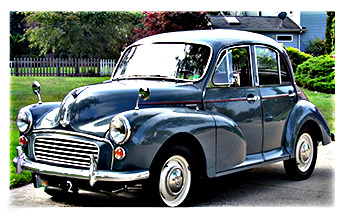 At the height of the "Swinging Sixties", British car manufacturers could almost do no wrong, introducing several models that would remain icons of global motoring history going on to become much sought after collector's items.
At the height of the "Swinging Sixties", British car manufacturers could almost do no wrong, introducing several models that would remain icons of global motoring history going on to become much sought after collector's items.
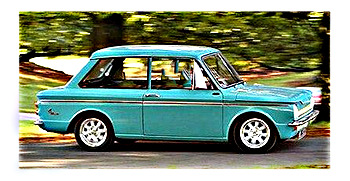 The beginning of the decade saw the launch of the Mini, jointly produced and marketed by Morris and Austin, both now part of the BMC Group. The UK and the World could not get enough of the Mini. More than most other models, the Mini symbolised the UK automotive industry during the gold decade.
The beginning of the decade saw the launch of the Mini, jointly produced and marketed by Morris and Austin, both now part of the BMC Group. The UK and the World could not get enough of the Mini. More than most other models, the Mini symbolised the UK automotive industry during the gold decade.
Such was the unprecedented demand in the compact car market; the Rootes Group even went as far as specially commissioning a production unit to produce their own compact- the Hillman Imp.
![]()
 Rear engined and roomier than the BMC versions, the Imp failed to capture the imagination of the UK public.
Rear engined and roomier than the BMC versions, the Imp failed to capture the imagination of the UK public.
Another area where Britain had always been highly regarded and enjoyed considerable export sales was in the sports and touring car sectors, with iconic models from Jaguar, MG and Triumph earning international acclaim, backed up by some very attractive models from independents such as Aston Martin, Bristol, Jensen, Lotus and Reliant.
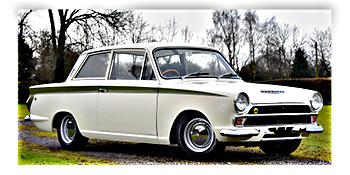 Taking their share of the domestic and export market was Morgan using the traditional design and production methods that the family-owned concern had developed half a century earlier.
In the mass-market family saloon sector, the key players, BMC, Triumph, Ford and Vauxhall, succeeded in holding on to their market share, despite intense competition from Western Europe and the Far East.
Among the top-sellers in the sector during the Sixties were the Morris 1000, eventually discontinued in 1969 after two decades in production.
Taking their share of the domestic and export market was Morgan using the traditional design and production methods that the family-owned concern had developed half a century earlier.
In the mass-market family saloon sector, the key players, BMC, Triumph, Ford and Vauxhall, succeeded in holding on to their market share, despite intense competition from Western Europe and the Far East.
Among the top-sellers in the sector during the Sixties were the Morris 1000, eventually discontinued in 1969 after two decades in production.
![]()
So convinced were BMC that the Minor 1000 had run its course that they even introduced its replacement, the BMC 1100/1300 Series, in 1962, with the two models competing successfully against each other for the next seven years.
Triumph began the Sixties with their quirky Herald, which sold steadily despite in-house opposition from the 1300 series that first hit the showrooms in 1965.
In the mass-market family saloon sector, the key players, BMC, Triumph, Ford and Vauxhall, succeeded in holding on to their market share, despite intense competition from Western Europe and the Far East.
![]()
Another market sector where the UK had always been highly regarded an was in the sports and touring car sectors, with Jaguar, MG and Triumph earning international acclaim, backed up by independents such as Aston Martin, Bristol, Jensen, Lotus and Reliant.
Incredible now as it was then, as the golden decade of the Sixties was drawing to a close , the incredible success enjoyed by the UK car industry was beginning to wane and would soon move into a state of free fall.
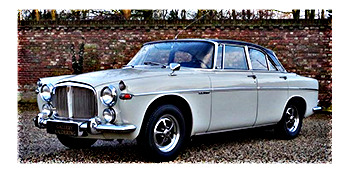 Leading the way down the slippery slope was the hugely unsuccessful merger between BMC and British Leyland to form the British Leyland Motor Company (BLMC).
Leading the way down the slippery slope was the hugely unsuccessful merger between BMC and British Leyland to form the British Leyland Motor Company (BLMC).
The merger was supposed to provide safety in numbers to allow UK manufacturers to better compete against the wave of less expensive and better produced cars coming from the Far East.
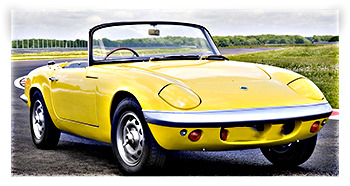 The conglomerate was doomed to failure from the start due to a combination of volatile labour relations and incompetent management that translated itself into dated designs, poorly finished cars and the inability to meet any kind or reasonable delivery schedule.
The conglomerate was doomed to failure from the start due to a combination of volatile labour relations and incompetent management that translated itself into dated designs, poorly finished cars and the inability to meet any kind or reasonable delivery schedule.
 During the Seventies, the UK car industry declined to a level that companies who had survived wars and depressions disappeared from the scene, swallowed up by the global giants of the car industry, with much of the production going overseas.
During the Seventies, the UK car industry declined to a level that companies who had survived wars and depressions disappeared from the scene, swallowed up by the global giants of the car industry, with much of the production going overseas.


